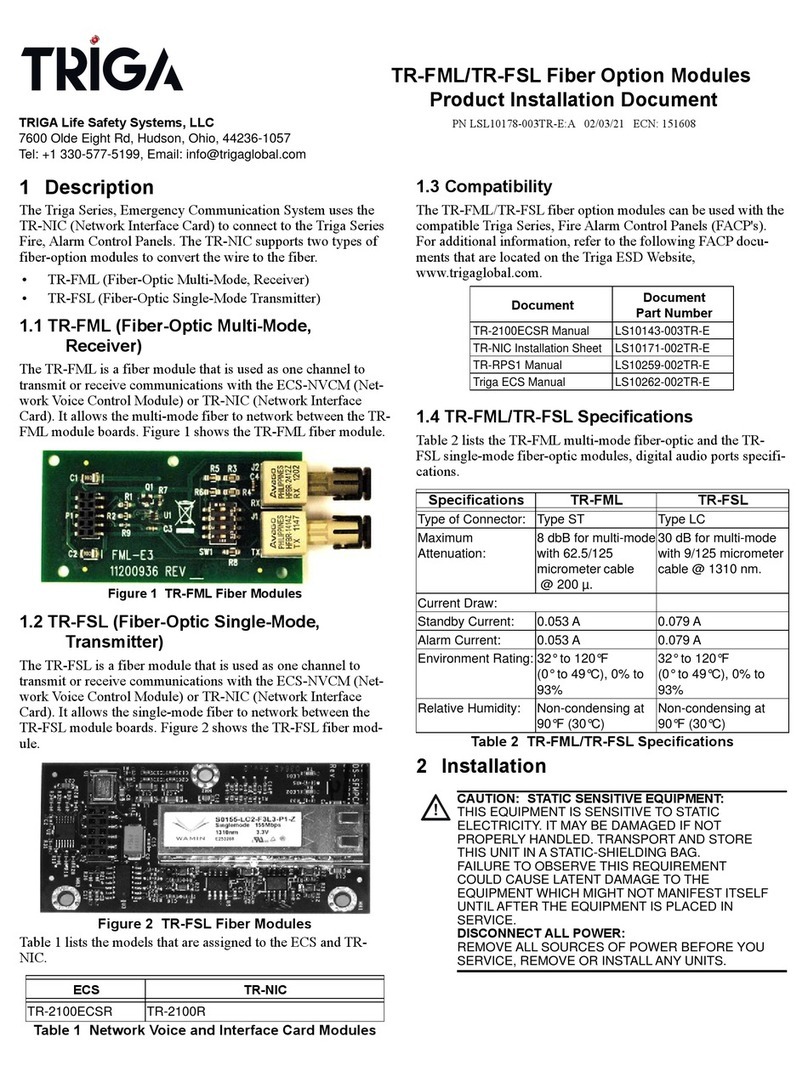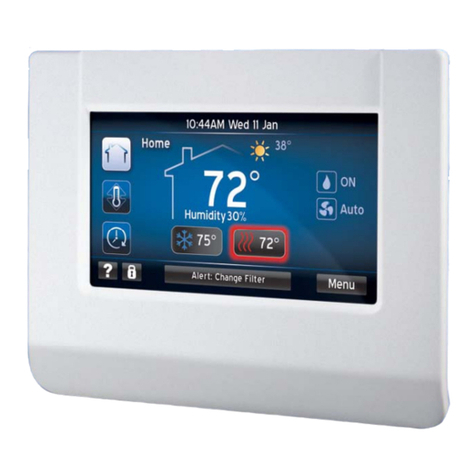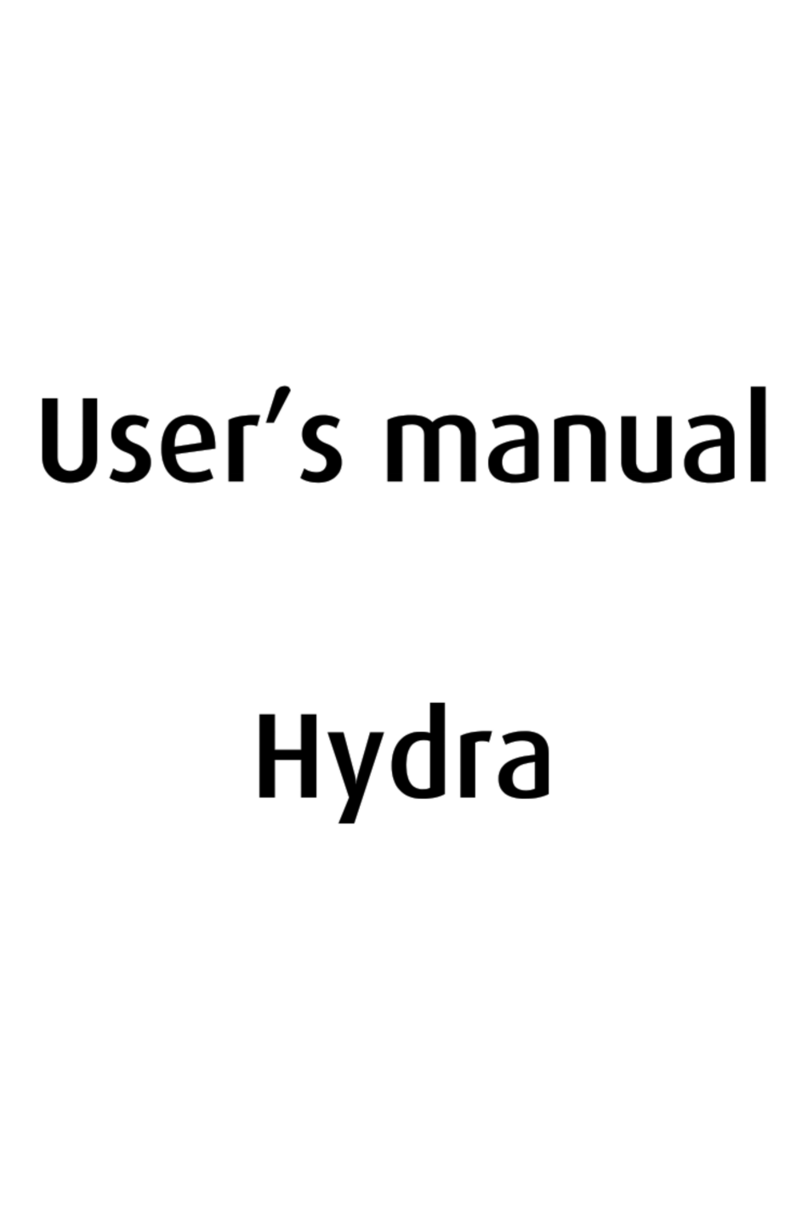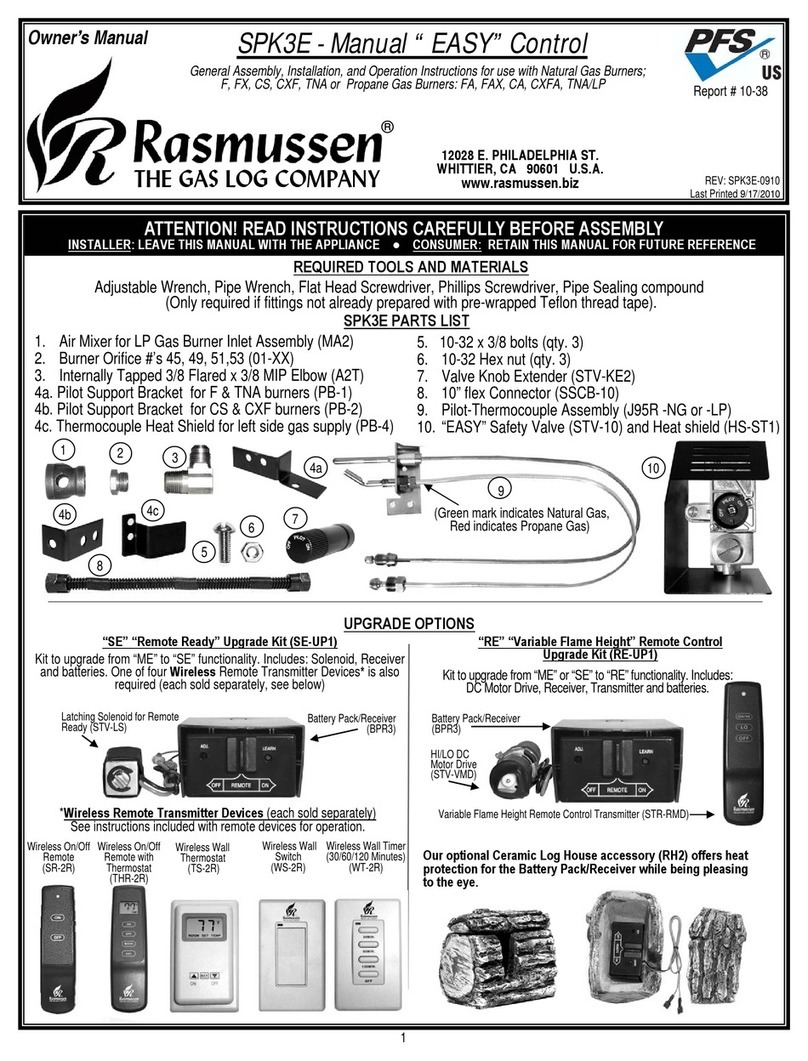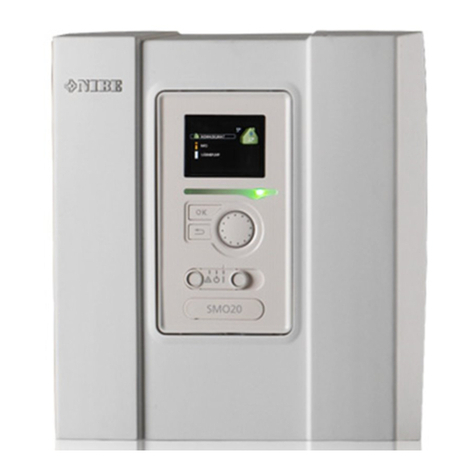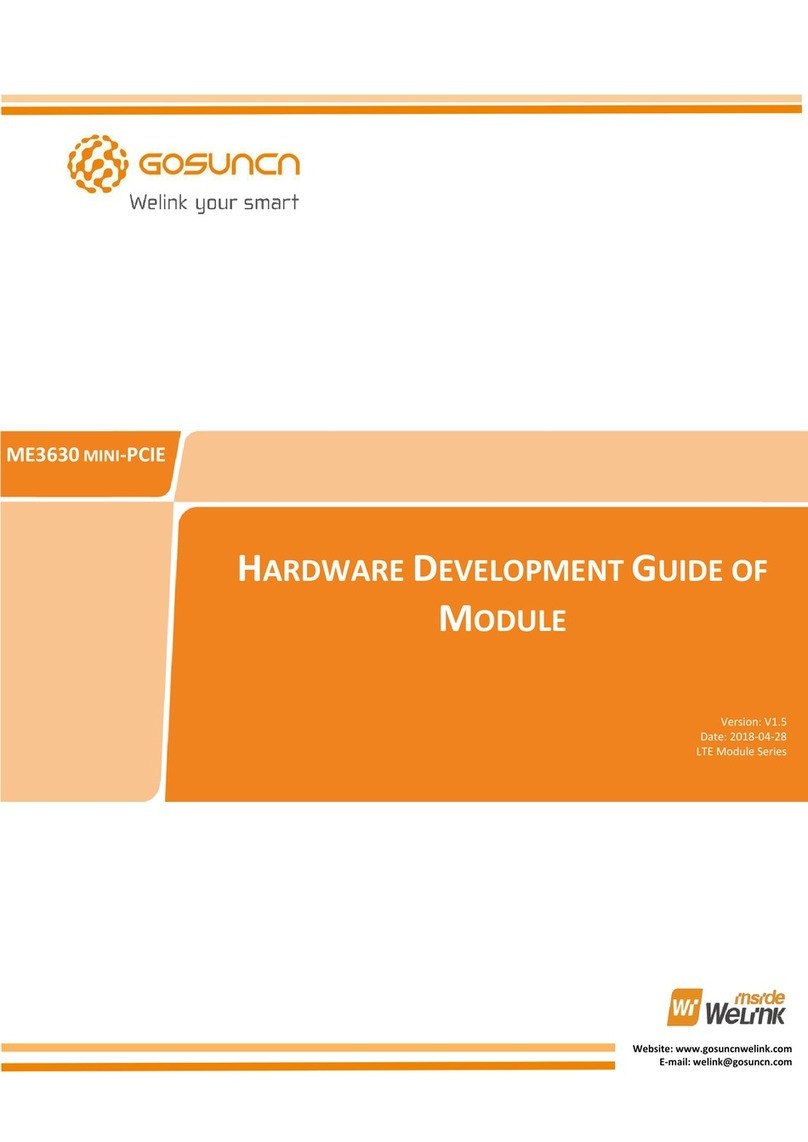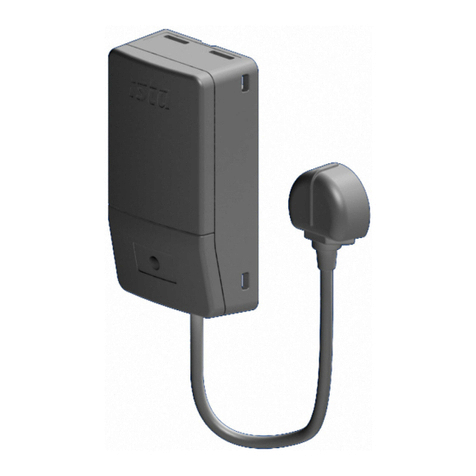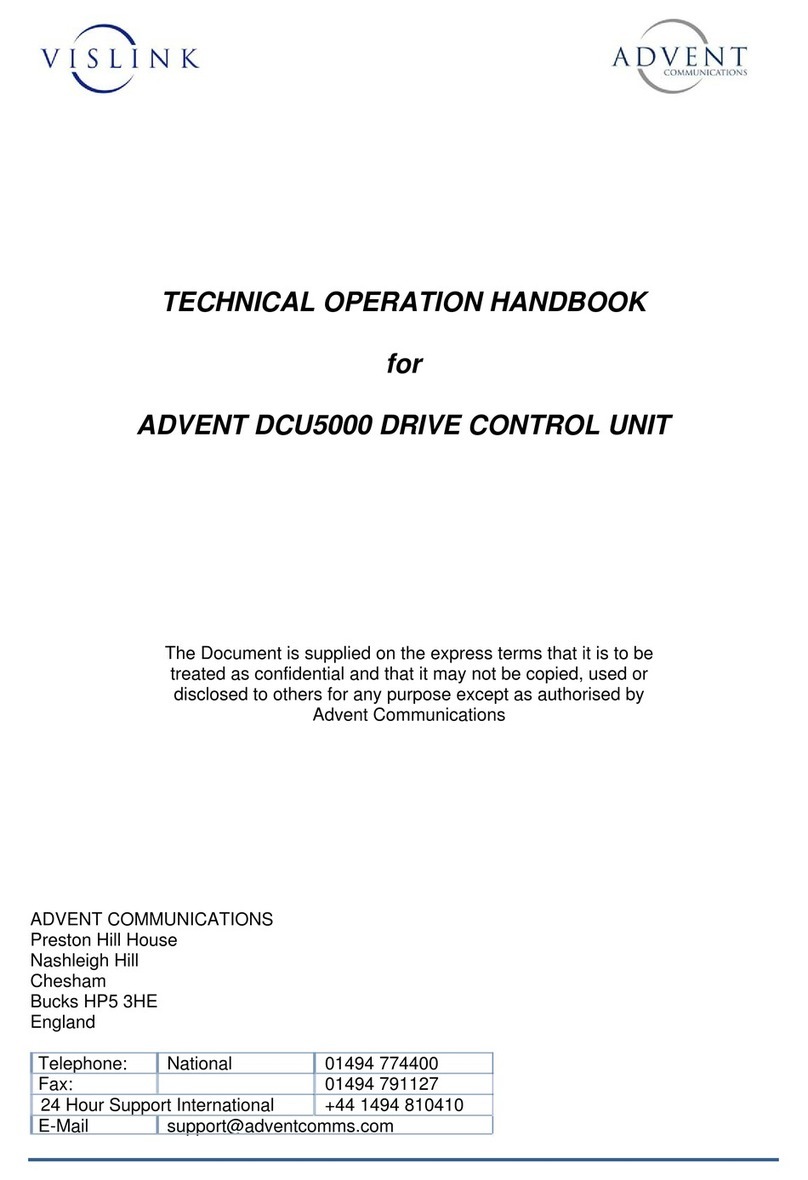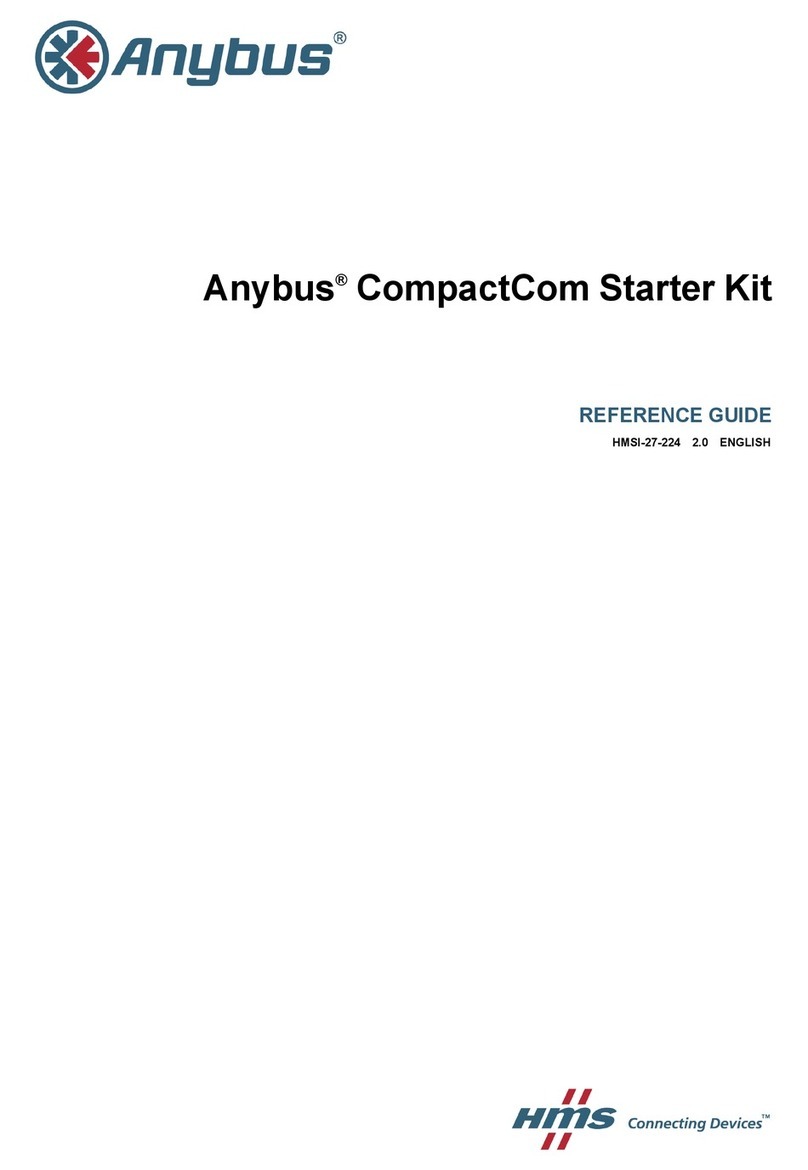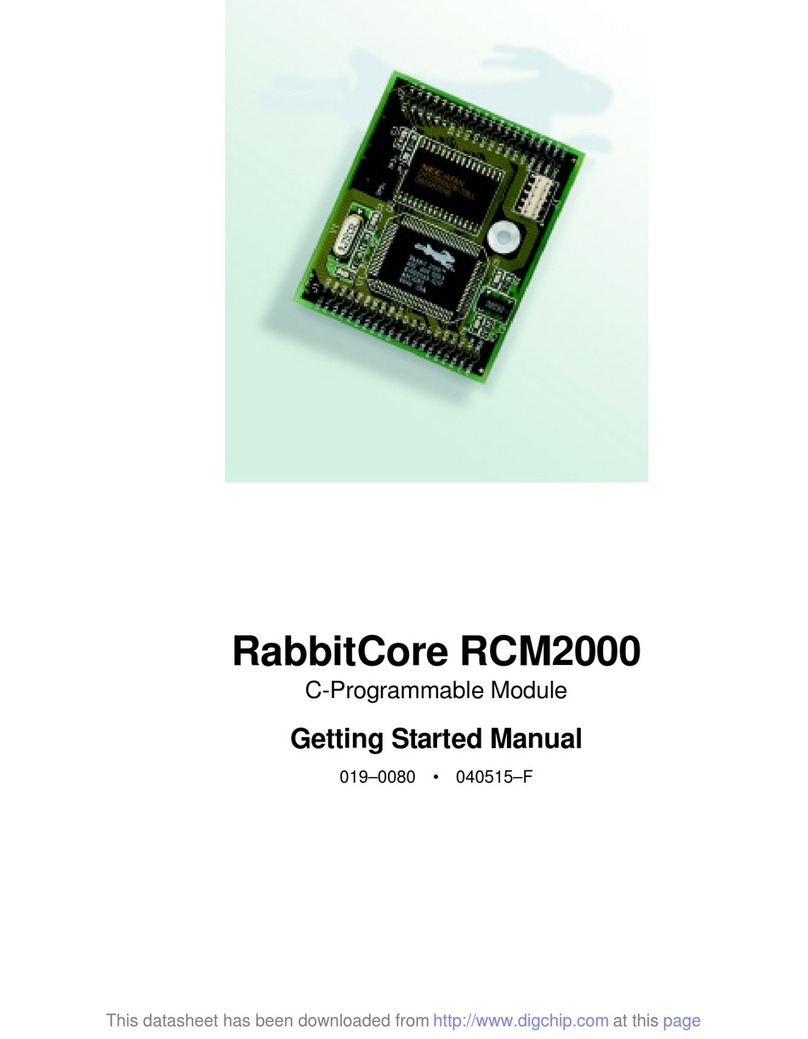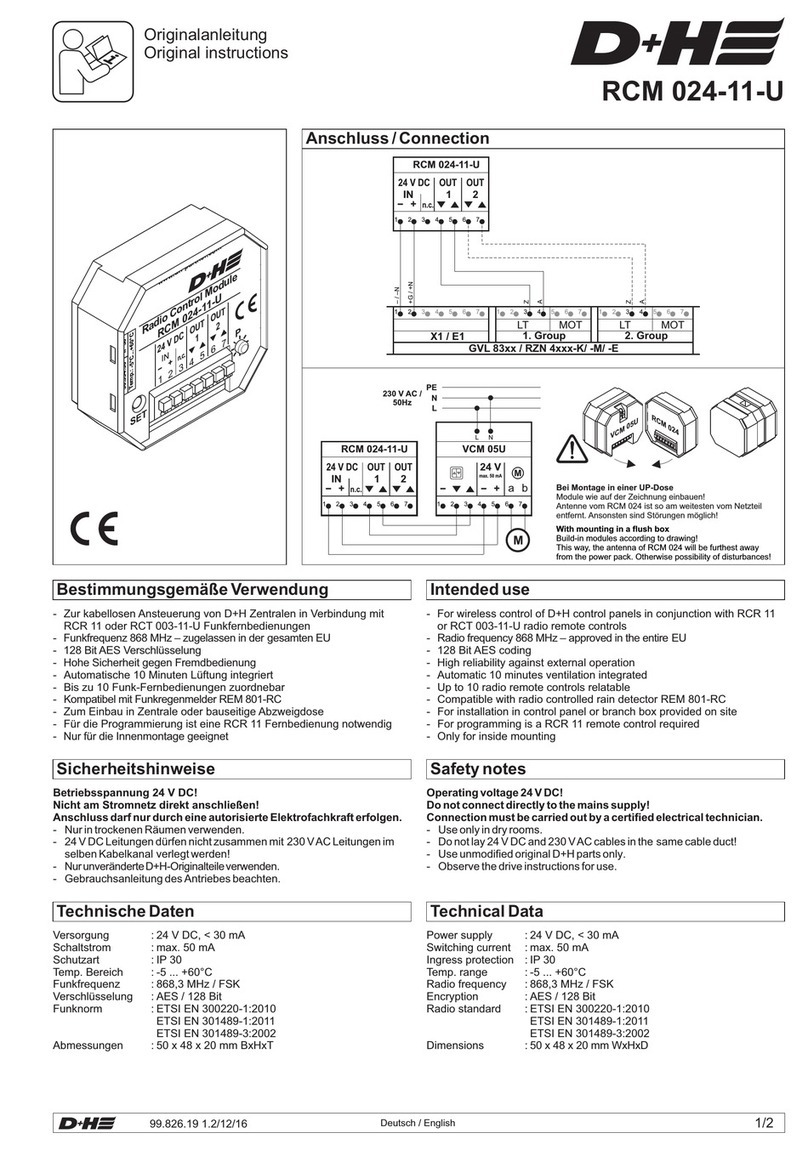Epec 2024 Technical manual

© Epec Oy
Epec 2024 Control Module
Technical Document

Epec CAN Module Family
2024 CONTROL MODULE
2 / 34
07.10.2010
2024G08,G18 / MAN000185
Epec Oy reserves all rights for improvements without prior notice
Epec Oy Postiosoite/Postal address Puhelin/Phone Fax Internet
Tiedekatu 6 PL/P.O.Box 194 +358-(0)20-7608 111 +358-(0)20-7608 110 www.epec.fi
FIN-60320 Seinäjoki FIN-60101 Seinäjoki, Finland
DOCUMENT VERSION HISTORY
Date Notes
07.10.2010 Updated sections 2.1.2 Codesys 2.3, 6.1 Protection and 7.1 Mounting.
02.12.2009
Sections 3.8 Specification for Internal Diagnostics, 3.9 Closed Loops
Wiring, 3.10 I/O / IEC Map, 4.2 Power Consumption and 4.3 Power
Supply Pins updated.
01.10.2008 Document and layout updated
16.08.2006 First released version

Epec CAN Module Family
2024 CONTROL MODULE
3 / 34
07.10.2010
2024G08,G18 / MAN000185
Epec Oy reserves all rights for improvements without prior notice
Epec Oy Postiosoite/Postal address Puhelin/Phone Fax Internet
Tiedekatu 6 PL/P.O.Box 194 +358-(0)20-7608 111 +358-(0)20-7608 110 www.epec.fi
FIN-60320 Seinäjoki FIN-60101 Seinäjoki, Finland
TABLE OF CONTENTS
1GENERAL.............................................................................................................................4
1.1 Purpose of This Document........................................................................................4
1.2 About Manufacturer...................................................................................................4
1.3 Epec CAN Module Family .........................................................................................4
1.4 Basic Skills Required.................................................................................................4
1.5 Safety Guidelines ......................................................................................................4
1.6 Warranty....................................................................................................................5
1.7 Limited Liability..........................................................................................................6
1.8 Environmental Statement..........................................................................................6
2I/O MODULE GENERAL DESCRIPTION.............................................................................7
2.1 Programming Environment........................................................................................7
2.1.1 Codesys 2.1 ....................................................................................................8
2.1.2 Codesys 2.3 ....................................................................................................8
2.2 CANopen Indexes .....................................................................................................8
3INPUT / OUTPUT SPECIFICATIONS...................................................................................9
3.1 Configurable I/Os.......................................................................................................9
3.2 Digital Input..............................................................................................................10
3.3 Current Measuring Feedback..................................................................................11
3.4 Digital Input / PWM Output / Digital Output.............................................................12
3.5 Digital Input / Analog Input ......................................................................................15
3.6 Digital Input / Digital Output (sinking)......................................................................17
3.7 Digital Input / Pulse Input.........................................................................................19
3.8 Specification for Internal Diagnostics ......................................................................21
3.9 Closed Loops Wiring ...............................................................................................21
3.10 I/O / IEC Map...........................................................................................................22
3.11 AMPSEAL Connectors............................................................................................23
3.12 AMPSEAL Cable Dimensions .................................................................................23
4POWER SUPPLY................................................................................................................24
4.1 Overvoltage Protection............................................................................................24
4.2 Power Consumption................................................................................................24
4.3 Power Supply Pins ..................................................................................................24
5BUS CONNECTION............................................................................................................25
5.1 Bus Connection Pins ...............................................................................................25
5.2 CAN Interface..........................................................................................................25
6ENVIRONMENTAL CHARACTERS...................................................................................26
6.1 Protection.................................................................................................................26
6.2 EMC Tests...............................................................................................................26
6.3 Environmental Tests................................................................................................31
7HOUSING............................................................................................................................32
7.1 Mounting..................................................................................................................32
7.2 Unit Dimensions ......................................................................................................33
8ADDITIONAL DOCUMENTS..............................................................................................34

Epec CAN Module Family
2024 CONTROL MODULE
4 / 34
07.10.2010
2024G08,G18 / MAN000185
Epec Oy reserves all rights for improvements without prior notice
Epec Oy Postiosoite/Postal address Puhelin/Phone Fax Internet
Tiedekatu 6 PL/P.O.Box 194 +358-(0)20-7608 111 +358-(0)20-7608 110 www.epec.fi
FIN-60320 Seinäjoki FIN-60101 Seinäjoki, Finland
1 GENERAL
1.1 Purpose of This Document
This technical document is meant to be used in system development. This document contains
necessary data concerning the module in question, which system designer needs in system
development work.
Copying of this document without permission is prohibited. All trademarks mentioned in this
document are owned by their manufacturers.
1.2 About Manufacturer
Epec Oy helps its customers to manufacture efficient, safe and environmental friendly mobile
working machines and special vehicles which help their customers to maximise their
productivity.
Epec is a solution provider specialized in embedded control systems, vehicle computers and
information logistics systems for mobile machines. We believe that we know control systems for
challenging conditions and we are able to offer a total solution from control units to project
services and designing.
1.3 Epec CAN Module Family
Epec CAN Module Family is designed to operate in extreme environments, where vibration,
wide temperature changes and moisture are normal conditions. The requirements for the
system’s reliability and safety have been the key words in module family development. A small
and protective module casing keeps inside high performance microcontroller with lots of control
capabilities.
1.4 Basic Skills Required
The user of this document must have professional skills on machine controlling, CAN
communication, PLCopen programming according to IEC61131-1 and should have skills to use
CoDeSys 2.1/2.3 programming environment.
Please refer CoDeSys 2.1/2.3 manual for further information on programming environment and
required installations.
Please refer CAN and CANopen documentation from CAN in Automation (CiA) for further
information on communication issues.
1.5 Safety Guidelines
The user of this documentation should follow general machine safety guidelines, directives and
regulation appropriate to his/her country or market area.
This product does not comply with SIL2 or SIL3 classifications and should not be used in such
applications, e.g. lifting people, where SIL 2 or SIL3 are required by directives or other
regulations.
A separate safety analysis is always recommended for the machine and its control system. The
features of this product should be well documented in machine and control system documents

Epec CAN Module Family
2024 CONTROL MODULE
5 / 34
07.10.2010
2024G08,G18 / MAN000185
Epec Oy reserves all rights for improvements without prior notice
Epec Oy Postiosoite/Postal address Puhelin/Phone Fax Internet
Tiedekatu 6 PL/P.O.Box 194 +358-(0)20-7608 111 +358-(0)20-7608 110 www.epec.fi
FIN-60320 Seinäjoki FIN-60101 Seinäjoki, Finland
so that the machine operator has the right information how to operate the machine correctly and
safely.
This product is designed to be used only for machine controlling purposes. The manufacturer
does not assume any responsibility for this product being fit for any particular application, unless
otherwise expressly stated in writing by the manufacturer.
This product complies with those certifications and standards that are listed below. The
manufacturer does not guarantee that this product complies any other certification, standard or
test than listed below.
This product is not field serviceable, so it should not be opened at any situation.
An external fuse should be installed for the product or the system power supply.
The system should be designed and constructed according to the Epec general mounting and
cabling instruction document.
Epec Oy reserves a right to improve its products without a further notice.
1.6 Warranty
The manufacturer does not assume any responsibility for the products being fit for any particular
purpose, unless otherwise expressly stated in writing by the manufacturer.
The manufacturer gives the warranty of twelve (12) months to the products and thereto related
firmware from commissioning or eighteen (18) months from the date of delivery of the products
which ever occurs first
The manufacturer is during the warranty period responsible for defects in the products and
thereto related firmware resulting from faults in material, design or workmanship. The
manufacturer’s only obligation under this warranty is to, at its sole discretion, either to replace
the products and/or thereto related firmware or to repair the defective products. The
manufacturer shall, at its sole option, repair the products at its manufactory in Seinäjoki,
Finland.
The warranty does not cover any costs related to removing or fastening of devices related to the
products. Neither does the warranty cover the expenses of sending devices to or from the
manufacturer for repairs. The warranty does not cover possible expenses relating to travelling,
accommodation, daily benefits, etc. of installers.
The warranty becomes null and void if the buyer and/or a third party alters the products or the
firmware in any way or if they are not used in accordance with the Manufacturer’s operating
instructions.
All claims with respect to defects in the products shall be made to the manufacturer without
delay and no later than on the seventh (7th) day after the defect has been or should have been
discovered by the buyer. The manufacturer strives to reply to the claim in writing within two (2)
weeks from the receipt of the claim. The buyer shall attach to the claim a possible error report or
equivalent explanation of the grounds for the claim.
The manufacturer gives no other warranties whatsoever for the products than the warranty set
out in this section and thus the warranty given in this section sets forth the warranty given by the
manufacturer in its entirety.

Epec CAN Module Family
2024 CONTROL MODULE
6 / 34
07.10.2010
2024G08,G18 / MAN000185
Epec Oy reserves all rights for improvements without prior notice
Epec Oy Postiosoite/Postal address Puhelin/Phone Fax Internet
Tiedekatu 6 PL/P.O.Box 194 +358-(0)20-7608 111 +358-(0)20-7608 110 www.epec.fi
FIN-60320 Seinäjoki FIN-60101 Seinäjoki, Finland
1.7 Limited Liability
The manufacturer shall under no circumstances be liable for loss of production, loss of profit,
loss of use or any other consequential damages and/or indirect losses, whatever their cause
may be. In case claims based on product liability are brought against the Manufacturer for which
claims the manufacturer may be liable, the manufacturer’s liability is limited to the extent
normally covered under normal product liability insurances.
The buyer shall compensate the manufacturer to the extent that the manufacturer might be
liable to pay damages as a result of claims based on product liability according to paragraph
above.
1.8 Environmental Statement
The manufacturer uses ISO14001 environmental certified processes and materials to
manufacture products. The manufacturer undertakes to arrange for the recycling and scrapping
of the products that are returned to the manufacturer by the buyer and/or the products that are
received by the Manufacturer in connection with maintenance services performed as a result of
that repairing of the products is deemed by the manufacturer to be inappropriate.
The manufacturer will charge a scrapping fee from the buyer according to the manufacturer's
price list in force from time to time. No scrapping fee will, however, be charged for products that
are received by the manufacturer during the warranty period.

Epec CAN Module Family
2024 CONTROL MODULE
7 / 34
07.10.2010
2024G08,G18 / MAN000185
Epec Oy reserves all rights for improvements without prior notice
Epec Oy Postiosoite/Postal address Puhelin/Phone Fax Internet
Tiedekatu 6 PL/P.O.Box 194 +358-(0)20-7608 111 +358-(0)20-7608 110 www.epec.fi
FIN-60320 Seinäjoki FIN-60101 Seinäjoki, Finland
2 I/O MODULE GENERAL DESCRIPTION
I/O Module is part of the Epec CAN Module Family. I/O Module has large amount of digital and
analog inputs and digital outputs. Digital outputs can be configured to be used as digital inputs
and vice versa. Module is used in a CAN control module system as a multifunction controller
with different kinds of sensors and actuators, such as proportional valves, servo motors, and
electro-hydraulic components. This PLCopen programmable (with CoDeSys tool) module can
also be used as an independent controller because of digital and analog I/O capabilities. I/O
Module has two CAN-busses.
Features Applications
•ISO High Speed CAN1 interface
•
Forest Machines
•Road Maintenance
•Construction Machines
•Crushing Stations
•Industrial Machines
•Agricultural applications
•Automation applications
•Mining Machines
•ISO High Speed CAN2 interface
•Operating voltage 10 - 30 VDC
•Recommended operating voltage 24 VDC
•Overvoltage protection
•Overheating and short-circuit protection for
outputs
•Short-circuit protection for outputs
•Gold plated, locked and sealed connectors:
8-pin AMPSEAL for module connection
3 x 23-pin AMPSEAL for I/O
•Small outline dimensions: 147 x 113 x 46
•Weight 0,7 kg
Monitoring Functions
Following issues can be monitored by the application
•Supply voltage
•Firmware/application code corruption
•Module temperature
Software deadlock is monitored by the hardware watchdog that reboots the module
automatically after 300 ms software deadlock.
2.1 Programming Environment
This product can be programmed with either CoDeSys 2.1 or CoDeSys 2.3 depending on the
module’s firmware. If the firmware’s runtime is older than 2.1x, the programming environment is
CoDeSys 2.1 and if the runtime is 2.3.x or newer the programming environment is CoDeSys
2.3.
The runtime version can be checked from index with a CANopen tool, for example with
CANmoon.

Epec CAN Module Family
2024 CONTROL MODULE
8 / 34
07.10.2010
2024G08,G18 / MAN000185
Epec Oy reserves all rights for improvements without prior notice
Epec Oy Postiosoite/Postal address Puhelin/Phone Fax Internet
Tiedekatu 6 PL/P.O.Box 194 +358-(0)20-7608 111 +358-(0)20-7608 110 www.epec.fi
FIN-60320 Seinäjoki FIN-60101 Seinäjoki, Finland
2.1.1 Codesys 2.1
•Flash
•248 x 16-bit flash saved parameters (Runtime older than 2.15)
•756 x 16-bit flash saved parameters (Runtime 2.15 or newer)
•CAN buses
•Supported baud rates 20, 50, 100, 125, 250, 500 and 1000 kbit/s.
•CAN1
•CANopen
•CAN2
•User programmable
•J1939
•Pulse inputs
•Maximum pulse input frequency 20 kHz.
•Joint frequency for all pulse inputs. (e.g. four channel in use --> 5 kHz for each channel.)
•Minimum PWM frequency
•40 Hz for 20 MHz module
•80 Hz for 40 MHz module
2.1.2 Codesys 2.3
•Flash
•6200 bytes flash saved parameters.
•10 separately saved sets.
•Maximum code size 256 kb.
•CAN-buses
•User programmable CAN for all physical CAN-buses
•Supported baud rates 50, 100, 125, 250, 500 and 1000 kbit/s.
•Supported protocols
•CANopen (for all physical buses)
•J1939 (only for one bus in the same module)
•ISOBUS (only for one bus in the same module)
•Possible to add external c-programmed library
•Minimum PWM frequency
•40 Hz for 20 MHz module
•80 Hz for 40 MHz module
•Maximum pulse input frequency 40 kHz. Joint frequency for all pulse inputs. (e.g. four
channel in use --> 10 kHz for each channel). Is dependable for the other interrupt load in
module (for example heavy CAN-traffic can reduce maximum frequency).
2.2 CANopen Indexes
CANopen communication features can be installed through software, for example NodeIDs and
CAN rates. For more information refer to programming manuals.

Epec CAN Module Family
2024 CONTROL MODULE
9 / 34
07.10.2010
2024G08,G18 / MAN000185
Epec Oy reserves all rights for improvements without prior notice
Epec Oy Postiosoite/Postal address Puhelin/Phone Fax Internet
Tiedekatu 6 PL/P.O.Box 194 +358-(0)20-7608 111 +358-(0)20-7608 110 www.epec.fi
FIN-60320 Seinäjoki FIN-60101 Seinäjoki, Finland
3 INPUT / OUTPUT SPECIFICATIONS
I/O module contains inputs and outputs or, in other words, I/O pins of many different types.
There are, for example, outputs which source current and outputs which sink current.
Furthermore, there are I/O pins which can be used as inputs or as outputs at the control of the
application programmer.
3.1 Configurable I/Os
Max
Amount
DI AI PI DO PWM
Digital
Input
Analog
Input
Current
Measuring
Feedback
Pulse
Input
Digital
Output
(sourcing)
Digital
Output
(sinking)
Pulse Width
Modulation
Output
4 x
4 x
24 x x x
8 x x
4 x x
8 x x
52 48 12 8 28 24
The usage of each I/O pin is determined by the application.

Epec CAN Module Family
2024 CONTROL MODULE
10 / 34
07.10.2010
2024G08,G18 / MAN000185
Epec Oy reserves all rights for improvements without prior notice
Epec Oy Postiosoite/Postal address Puhelin/Phone Fax Internet
Tiedekatu 6 PL/P.O.Box 194 +358-(0)20-7608 111 +358-(0)20-7608 110 www.epec.fi
FIN-60320 Seinäjoki FIN-60101 Seinäjoki, Finland
3.2 Digital Input
Pins X1.19, X1.20, X2.19, and X2.20 are ground referenced inputs (DI).
Pins are associated with a bit variable in the IX area in PLCopen programming environment.
The application program will see there a logical zero when the pin is grounded or left open and
a logical one when the pin is connected to a positive voltage source.
Electrical Characteristics
Symbol Parameter Conditions Min Max Units
RIInput Resistance
VIGreater than 4,3 V (Note 1) 9,0 11 k
Ω
Referenced to 1,3 V;
VI Less than 4,3 V (Note 1) 6,2 7,6 kΩ
VIH Input High Voltage 4,8 30 V
VIL Input Low Voltage -0,5 4,2 V
fIInput Frequency tC=10 ms (Note 2, 3, 4, 5) 12 Hz
Variable tC(Note 2, 3, 5) 1/8tC
CIInput Capacitance 37 57 nF
Note 1: With input voltages below 4,3 V it seems like the internal input resistance was
connected to a 1,3 V voltage source.
Note 2: tCdenotes software cycle time.
Note 3: Violating this rating may lead to system not recognizing all input state transitions.
Note 4: These parameters depend on software cycle time.
Note 5: Applies to inputs used as normal digital input. Violating this rating may lead to
application program not noticing all input state transitions.
Connection Principle
+24V/+12V
Module

Epec CAN Module Family
2024 CONTROL MODULE
11 / 34
07.10.2010
2024G08,G18 / MAN000185
Epec Oy reserves all rights for improvements without prior notice
Epec Oy Postiosoite/Postal address Puhelin/Phone Fax Internet
Tiedekatu 6 PL/P.O.Box 194 +358-(0)20-7608 111 +358-(0)20-7608 110 www.epec.fi
FIN-60320 Seinäjoki FIN-60101 Seinäjoki, Finland
3.3 Current Measuring Feedback
Pins X1.5, X1.6, X2.3, and X2.4 are normally used as a return path for the loads of PWM
outputs. These kinds of pins have a small shunt resistor connected to ground. The shunt
resistor is used to measure the current flowing through the load. Nothing prevents using these
pins to measure currents from other sources as well.
In PLCopen programming environment, there is a word variable in IW area associated with each
pin from where the software can read the actual current flowing into the pin.
Electrical Characteristics
Symbol Parameter Conditions Min Max Units
RIInput Resistance 0,21 0,23 Ω
IIInput Current
Analog measuring
range 0,0 1,0 A
(Note 1) 1,7 A
TIRE Total Input Referred Error 55 mA
Note 1: Exceeding the max value might cause damage to input.
Connection Principle
A pin where the upper wire of the load is connected is PWM output / digital output. This
illustrates the normal way to connect loads when load current measurement is desired.
+24V
Module
Load

Epec CAN Module Family
2024 CONTROL MODULE
12 / 34
07.10.2010
2024G08,G18 / MAN000185
Epec Oy reserves all rights for improvements without prior notice
Epec Oy Postiosoite/Postal address Puhelin/Phone Fax Internet
Tiedekatu 6 PL/P.O.Box 194 +358-(0)20-7608 111 +358-(0)20-7608 110 www.epec.fi
FIN-60320 Seinäjoki FIN-60101 Seinäjoki, Finland
3.4 Digital Input / PWM Output / Digital Output
These pins are current sourcing outputs. In other words, pin connects the load to positive supply
voltage. The application program can also simultaneously monitor the actual state of the pin.
This feature makes it possible to detect short circuits to the ground. Open loads can not be
detected because the internal load resistor is connected to the ground.
Connector X1 Connector X2
X1.1
X1.2
X1.3
X1.4
X1.7
X1.8
X1.14
X1.15
X1.16
X1.17
X1.22
X1.23
X2.1
X2.2
X2.5
X2.6
X2.7
X2.8
X2.9
X2.10
X2.16
X2.17
X2.22
X2.23
These kind of outputs are also capable to generate pulse width modulated (PWM) output
signals. This feature is useful when driving proportionally controlled loads, e.g. proportional
hydraulic valves. Monitoring the state of the pin is generally not possible when the pin is used as
a PWM signal output.
PWM frequencies can be configured under software control in groups of outputs. The frequency
is set by HW_SET_PWM_FREQ function call. The setting is done by a PWM channel but
setting the frequency of one channel sets also the frequencies of all the other channels in the
same groups.
In very carefully selected applications a pin of this type can also be used as an input by using
the output state monitoring feature. In those cases, the output functionality of the pin must of
course be kept in off state. It must be taken care in system design that the output unintentionally
switching to on state causes no harm to the system.

Epec CAN Module Family
2024 CONTROL MODULE
13 / 34
07.10.2010
2024G08,G18 / MAN000185
Epec Oy reserves all rights for improvements without prior notice
Epec Oy Postiosoite/Postal address Puhelin/Phone Fax Internet
Tiedekatu 6 PL/P.O.Box 194 +358-(0)20-7608 111 +358-(0)20-7608 110 www.epec.fi
FIN-60320 Seinäjoki FIN-60101 Seinäjoki, Finland
PWM Frequency Control Groups (PFCG)
Group Channel Output pin
A 0 X1.23
1 X1.22
2 X1.17
3 X1.16
4 X1.1
5 X1.2
6 X1.4
7 X1.3
8 X2.2
9 X2.1
10 X2.9
11 X2.10
B 12 X2.8
C 13 X2.7
D 14 X2.6
E 15 X2.5
F 16 X1.7
17 X1.8
18 X1.15
19 X1.14
20 X2.17
21 X2.16
22 X2.22
23 X2.23
Electrical Characteristics
Symbol Parameter Conditions Min Max Units
ROOutput Resistance Output On 0,2 Ω
IOOutput Current Output On 3 A
fPWM PWM Frequency (Note 1) 80 2550 Hz
PWM Resolution
Group A and F (Note 1) 5 MHz/ fPWM
Group B, C, D and E
(Note 1) 625 kHz/ fPWM
Group A and F;
fPWM=100 Hz (Note 1) 50000
Group B, C, D and E;
fPWM=100 Hz (Note 1) 6250
RIInput Resistance Output Off 2,8 7,5 K
Ω
VIH Input High Voltage 3 VIN V
VIL Input Low Voltage Output Off -0,5 1 V
fIInput frequency
tC=10 ms (Note 2, 3, 4) 12 Hz
Variable tC(Note 2, 4) 1/8tC
tIInput Pulse Width
tC=10 ms (Note 2, 3, 4) 40 ms
Variable tC(Note 2, 4) 4tC

Epec CAN Module Family
2024 CONTROL MODULE
14 / 34
07.10.2010
2024G08,G18 / MAN000185
Epec Oy reserves all rights for improvements without prior notice
Epec Oy Postiosoite/Postal address Puhelin/Phone Fax Internet
Tiedekatu 6 PL/P.O.Box 194 +358-(0)20-7608 111 +358-(0)20-7608 110 www.epec.fi
FIN-60320 Seinäjoki FIN-60101 Seinäjoki, Finland
Connection Principle
A pin where the lower wire of the load is connected is current measuring feedback. This
illustrates the normal way to connect loads when load current measurement is desired.
Connection Principle (when used as an input)
Note 1: PWM capable outputs are divided into six groups. All outputs in the same group share
the same PWM frequency (default value 140 Hz)
Note 2: Violating this rating may lead to system not recognizing all input state transitions
Note 3: These parameters depend on software cycle time
Note 4: tCdenotes software cycle time
+24V
Module
Load
+24V/+12V
Module
+24V

Epec CAN Module Family
2024 CONTROL MODULE
15 / 34
07.10.2010
2024G08,G18 / MAN000185
Epec Oy reserves all rights for improvements without prior notice
Epec Oy Postiosoite/Postal address Puhelin/Phone Fax Internet
Tiedekatu 6 PL/P.O.Box 194 +358-(0)20-7608 111 +358-(0)20-7608 110 www.epec.fi
FIN-60320 Seinäjoki FIN-60101 Seinäjoki, Finland
3.5 Digital Input / Analog Input
Pins X1.12, X2.12, X3.5…X3.8, X3.13, and X3.14 are analog inputs. Some of the inputs are
grouped: X3.5, X3.6 and X3.7 is defined as group one, and X3.13 and X3.14 is group two. Both
groups can be configured either as a current input or as a voltage input. For example, if group
two is configured as a current input, then both pins X3.13 and X3.14 can only be used as a
current input.
Pins of this kind are used to measure analog signals. They can be used as high impedance
voltage inputs for signals from 0 to 5 volts or low impedance current inputs for signals from 0 to
22,7 milliamperes. Pins of this kind can be used as e.g. joystick connection when 41 k +2,5 V
(voltage input) is selected.
Inputs are divided into groups by the input impedance configuration. The input impedance of
each group is controlled by a bit in an Input Impedance Configuration Register (IICR). This
register is invisible to the programmer but it can be written by HW_SET_AI_TYPE function call.
When an input like this is configured as a low impedance current input, it can’t
withstand the normal maximum input voltage rating. The maximum rating is lowered
in this case to 15 volts.
In PLCopen programming environment, there is a word variable in IW area associated with each
pin from where the software can read the actual signal magnitude at the pin.
In carefully selected applications these pins can also be used as digital inputs. Generally, it is
not recommended. In high impedance voltage input configuration they have low threshold
voltage which is quite sensitive to interference signals. In low impedance current input
configuration they are subject to damage if they are connected to for example 24 volt system
voltage. There are bits in IX area associated with these inputs to support the DI functionality.
Input Impedance Configuration Register (IICR)
Bit Input Group
IICR.0 X1.12
IICR.1 X2.12
IICR.2 X3: 5, 6, 7
IICR.3 X3.8
IICR.4 X3: 13, 14

Epec CAN Module Family
2024 CONTROL MODULE
16 / 34
07.10.2010
2024G08,G18 / MAN000185
Epec Oy reserves all rights for improvements without prior notice
Epec Oy Postiosoite/Postal address Puhelin/Phone Fax Internet
Tiedekatu 6 PL/P.O.Box 194 +358-(0)20-7608 111 +358-(0)20-7608 110 www.epec.fi
FIN-60320 Seinäjoki FIN-60101 Seinäjoki, Finland
Electrical Characteristics
Symbol Parameter Conditions Min Max Units
VIInput Voltage Analog measuring range 0,0 5,0 V
IIInput Current Analog measuring range 0,0 22,7 mA
VIH Input High Voltage (Note 1) 2,0 30 V
(Note 2) 2,0 15 V
VIL Input Low Voltage -0,5 1,0 V
IIH Input High Current (Note 2) 9,0 27 mA
IIL Input Low Current (Note 2) -2,3 4,5 mA
RIInput Resistance Referred to 2,5 V (Note 1) 40 42 k
Ω
(Note 2) 215 225 Ω
TIRE Total Input Referred
Error
0,25 V
(Note 2) 1,1 mA
πITime Constant of Input
Low Pass Filter (Note 1) 3,1 4,7 ms
Connection Principle; High Impedance Voltage Input
Connection Principle; Low Impedance Current Iinput
Note 1: Input Configured for Voltage Measurement (220 ΩInput Resistor Disconnected)
Note 2: Input Configured for Current Measurement (220 ΩInput Resistor Connected)
+24V
Module
"0"
+24V
Module
"1"

Epec CAN Module Family
2024 CONTROL MODULE
17 / 34
07.10.2010
2024G08,G18 / MAN000185
Epec Oy reserves all rights for improvements without prior notice
Epec Oy Postiosoite/Postal address Puhelin/Phone Fax Internet
Tiedekatu 6 PL/P.O.Box 194 +358-(0)20-7608 111 +358-(0)20-7608 110 www.epec.fi
FIN-60320 Seinäjoki FIN-60101 Seinäjoki, Finland
3.6 Digital Input / Digital Output (sinking)
Pins X1.18, X1.21, X2.18, and X2.21 are current sinking outputs. In other words, pins connect
the load to the ground. The application program can also simultaneously monitor the actual
state of the pin. This feature makes it possible to detect open loads and short circuits to the
supply voltage.
In very carefully selected applications a pin of this type can also be used as an input by using
the output state monitoring feature. In those cases, the output functionality of the pin must of
course be kept in off state. It must be taken care in system design that the output unintentionally
switching to on state causes no harm to system.
There are two bit variables associated with each pin of this type in PLCopen programming
environment. The first is one of the QX output bits for controlling the pin as an output. The
second is one of the IX input bits for monitoring the actual state of the output or reading the pin
as an input.
Electrical Characteristics
Symbol Parameter Conditions Min Max Units
ROOutput Resistance Output On 0,12 Ω
IOOutput Current Output On 3 A
RIInput Resistance Output Off 9 11 k
Ω
VIH Input High Voltage Output Off 3,0 30 V
VIL Input Low Voltage -0,5 1,0 V
fIInput frequency tC=10 ms (Note 1, 2, 3) 12 Hz
Variable tC(Note 1, 3) 1/8tC
tIInput Pulse Width
tC=10 ms (Note 1, 2, 3) 40 ms
Variable tC(Note 1, 3) 4tC
Connection Principle
+24V
Module
Load

Epec CAN Module Family
2024 CONTROL MODULE
18 / 34
07.10.2010
2024G08,G18 / MAN000185
Epec Oy reserves all rights for improvements without prior notice
Epec Oy Postiosoite/Postal address Puhelin/Phone Fax Internet
Tiedekatu 6 PL/P.O.Box 194 +358-(0)20-7608 111 +358-(0)20-7608 110 www.epec.fi
FIN-60320 Seinäjoki FIN-60101 Seinäjoki, Finland
Connection Principle (when used as input)
Note 1: Violating this rating may lead to system not recognizing all input state transitions
Note 2: These parameters depend on software cycle time
Note 3: tCdenotes software cycle time
+24V
Module

Epec CAN Module Family
2024 CONTROL MODULE
19 / 34
07.10.2010
2024G08,G18 / MAN000185
Epec Oy reserves all rights for improvements without prior notice
Epec Oy Postiosoite/Postal address Puhelin/Phone Fax Internet
Tiedekatu 6 PL/P.O.Box 194 +358-(0)20-7608 111 +358-(0)20-7608 110 www.epec.fi
FIN-60320 Seinäjoki FIN-60101 Seinäjoki, Finland
3.7 Digital Input / Pulse Input
Pins X3.16…X3.23 are ground referenced inputs (DI) including pulse counting (PI) feature.
These pins have 10 kΩresistor connected to GND.
The application program is provided with frequency and number of the pulses seen in the input
in addition to the normal input state.
There are three variables associated with each pin of this type in IEC programming
environment. The first is a bit variable in the IX area just in the same way as with the pins
without the PI features. The other two are word variables in the IW memory area which hold the
frequency value and the number of pulses.
After starting up the module measures only the pulse frequency. Pulse counting, if needed,
must be enabled explicitly by the application program.
The pulse counting competes with the application program and other processes for the CPU
time. This makes it rather hard to estimate the actual maximum frequency of the pulses that the
module is able to count reliably. The maximum frequencies given in the table below are such
frequencies which make the module to freeze in practice if all inputs are connected to their
maximum frequencies. It means that to be able to reach the maximum frequencies, there is no
room for application program or any other processes like CAN traffic. So, the practical limits are
lower but the maximum values of the table still give the basis for the estimation.
Inputs of this type are also suitable for quadrature sensor position counting. Any of these inputs
can be logically paired with another similar input. The result is a two channel pulse counter
which is capable of detecting the direction of the movement of the sensor. The pairing is done in
application program.
The pulse count and pulse frequency can be read from the pulse input channels. The following
table shows the IW-addresses where to read the wanted data (when using CoDeSys 2.1).
Pulse Input channels
Channel Pin Pulse Frequency Pulse Count
0 X3.23 %IW150 %IW160
1 X3.17 %IW151 %IW161
2 X3.16 %IW152 %IW162
3 X3.20 %IW153 %IW163
4 X3.19 %IW154 %IW164
5 X3.18 %IW155 %IW165
6 X3.22 %IW156 %IW166
7 X3.21 %IW157 %IW167
For more information on pulse input channels refer to Hardware Library manual (HW lib).

Epec CAN Module Family
2024 CONTROL MODULE
20 / 34
07.10.2010
2024G08,G18 / MAN000185
Epec Oy reserves all rights for improvements without prior notice
Epec Oy Postiosoite/Postal address Puhelin/Phone Fax Internet
Tiedekatu 6 PL/P.O.Box 194 +358-(0)20-7608 111 +358-(0)20-7608 110 www.epec.fi
FIN-60320 Seinäjoki FIN-60101 Seinäjoki, Finland
Electrical Characteristics
Symbol Parameter Conditions Min Max Units
RIInput Resistance
VIgreater than 4,3 V (Note 1) 9,0 11 k
Ω
Referenced to 1,3 V;
VIless than 4,3 V (Note 1) 6,2 7,6 kΩ
VIH Input High Voltage 4,8 30 V
VIL Input Low Voltage -0,5 4,2 V
fI
Input Frequency
(frequency
measurement and
pulse counting)
(Note 2, 3, 6) 5 kHz
Sum of the frequencies of all the
pins (Note 2, 3, 6)
40 kHz
Input Frequency
(normal inputs)
tC=10 ms (Note 3, 4, 5, 7) 12 Hz
Variable tC(Note 3, 5, 7) 1/8tC
tIInput Pulse Width
Note 3, 6 50 µs
tC=10 ms (Note 3, 4, 5, 7) 40 ms
Variable tC(Note 3, 5, 7) 4tC
CIInput Capacitance 0,8 47 nF
Connection Principle
Note 1: With input voltages below 4,3 V it seems like the internal input resistance was
connected to a 1,3 V voltage source
Note 2: All conditions must be respected. Even if some of the inputs were not used for
frequency measurement or pulse counting, these conditions must nevertheless be
respected regarding those inputs too. Otherwise operation of other inputs may be
interfered
Note 3: Violating this rating may lead to system not recognizing all input state transitions
Note 4: These parameters depend on software cycle time
Note 5: tCdenotes software cycle time
Note 6: Applies to inputs used for frequency measurement and pulse counting. Violating this
rating may lead to incorrect measurement or counting
Note 7: Applies to inputs used as normal digital inputs. Violating this rating may lead to
application program not noticing all input state transitions
+24V/+12V
Module
This manual suits for next models
1
Table of contents
Other Epec Control Unit manuals




